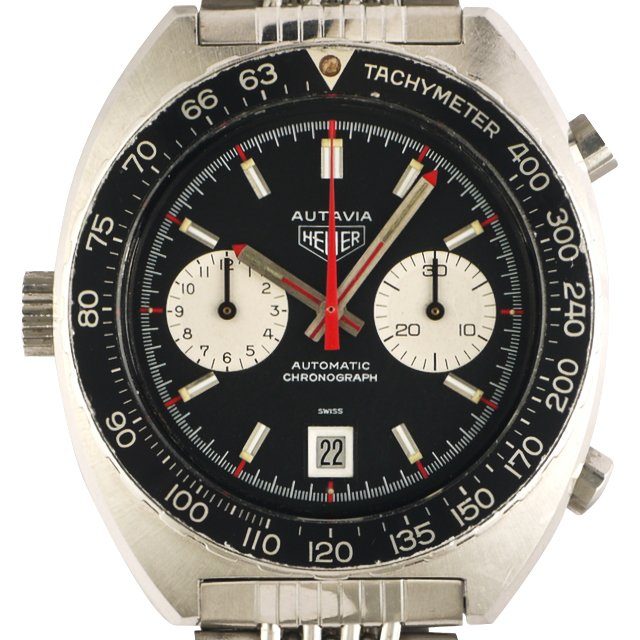
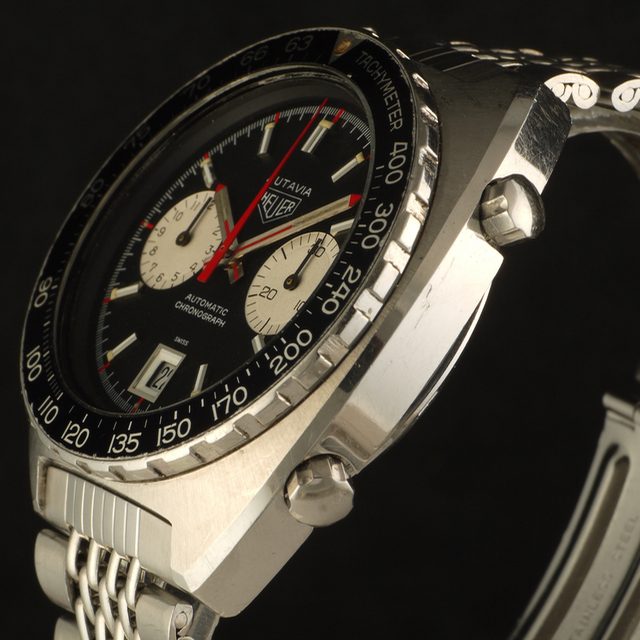
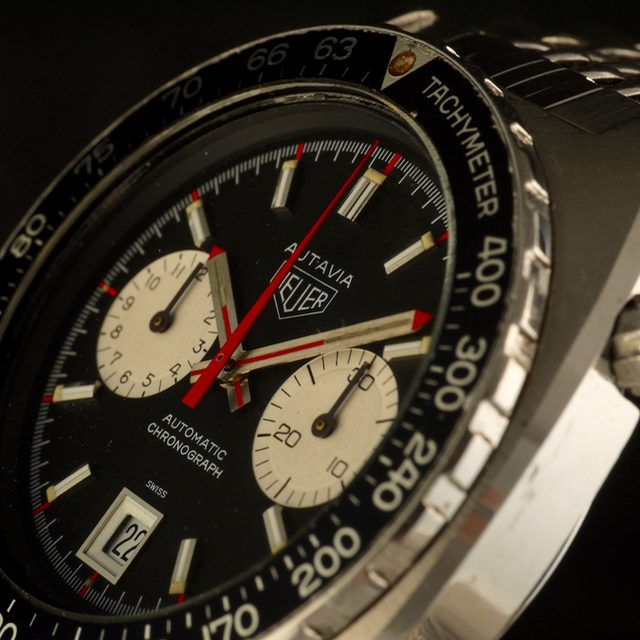
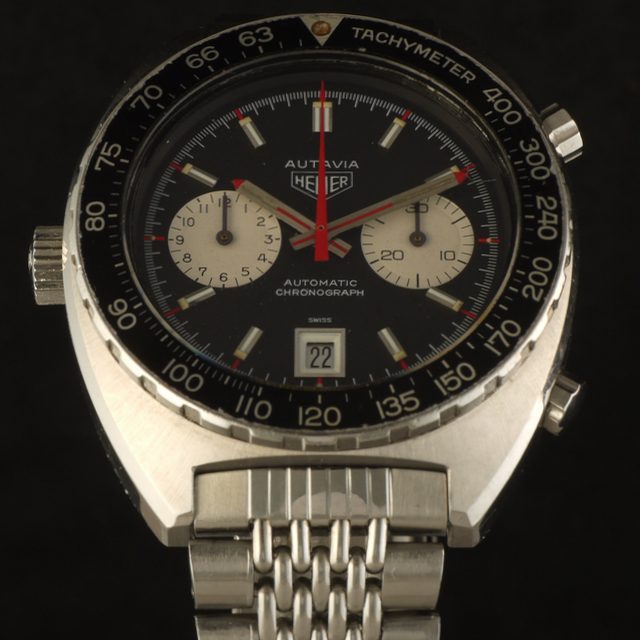
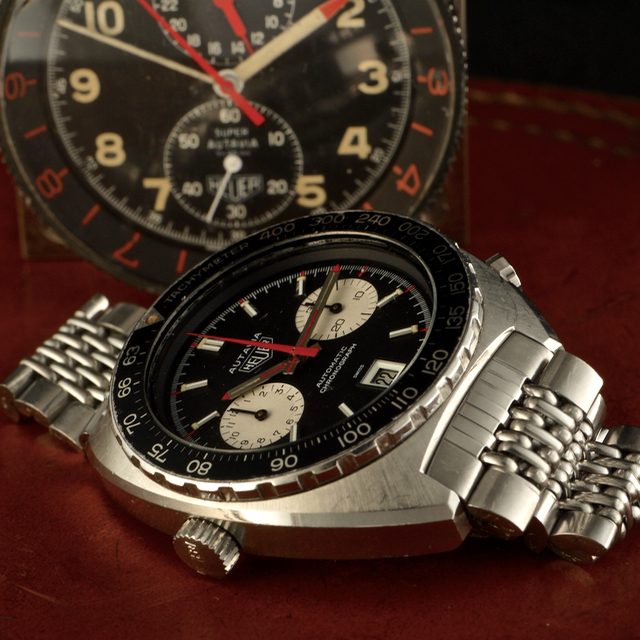
Heuer Autavia
Transmission Control Protocol/Internet Protocol (TCP/IP) is designed and in 1983 it becomes the standard for communicating between computers over the Internet1973 Heuer Autavia ref. 11630, cal. 12, 40.2 X 42mm. case. The Heuer Autavia 11630 proves that you don’t need to have a huge budget to get your hands on one of the best looking Motorsports watches out there.
At first, they applied the name Autavia to dashboard clocks and instrumentation used in automobiles and aircraft. Heuer recycled the name in the 1960s and applied it to their line of professional racing chronographs.
The name Autavia comes from a combination of two words: Automotive & Aviation, they are the archetype of 60s and 70s Motorsports watches. They have large cases, handsome dials, and excellent movements. During the golden age of automobile racing; a chronograph watch was an essential piece of kit and many of the racing greats had a Heuer strapped to their wrist.
Heuer has produced black dial 1163s; since the introduction of the Chronomatic movement, one of the world’s first automatic chronograph movements, in 1969. The dial and hands went through a few alterations over the early years of the model, ending with what you see here, the 1163V, or Viceroy.
The movement started based on the Buren 1282 with a micro-rotor and they did not design it to attach a chronograph mechanism this led to the crown at 9 o’clock. While the el Primero has survived until today, the expensive design made this movement a victim of the quartz boom. Consequently, the number of these watches with the crown on the wrong side is pretty low.
In the 1960s and 1970s, no brand was more prominent in motorsports timing than Heuer; at that time Heuer was selling many more stopwatches than wristwatches and struggling to sell their chronograph wristwatches. That is until Viceroy Cigarettes approached Heuer to come up with a co-promotion. Seeing mutual benefit, Heuer produced a special version of the 1163 as part of the deal; the 1163V, and together with Viceroy, offered the watch for $88 when a customer mailed in the end flap of a Viceroy cigarette carton.
Authorized dealers sold the standard 1163T for $200 during the time period of the Viceroy promotion; coming in with black or white dials (Today collectors call the white dial as the Siffert). The Viceroy promotion allowed people to buy a virtually identical copy of a $200 watch for less than half the price.
It all started in 1860, with Edouard Heuer setting up a workshop in Bernese. A predominantly French-speaking area of Switzerland close to the French border. A small town even now with a population under 5000.
However, watch companies know extremely well, by setting up where somebody founded Breitling and has made its home at the very beginning to Longines. Of course, those companies were artisan workshops producing small numbers of mostly silver cased pocket watches.
In 1914 Heuer made the first wristwatch for men. They used pocket-watch movements and reflected demand for wristwatches. That would only increase during the First World War and after.
1920 was the first time in 8 years that an Olympic Games had been held, following the cancellation of the 1916 Berlin events. Heuer had some prominence as a sports timing company by this point and was pleased to be selected as the official timer of the Antwerp games. This was subsequently extended to the 1924 games in Paris and 1928 in Amsterdam: this cemented the brand marriage between timing and sports.
For today’s collectors, the heyday for Heuer really began in the mid-1930s. I think that’s also probably true for many other brands. Heuer began making pilots chronographs in 35. Primarily Air Force pilots used these, a lot of them in the German Air Force. For most Heuer collectors, these pilot chronographs from around 1935. The first real survivors, regularly someone can find on the market today.
